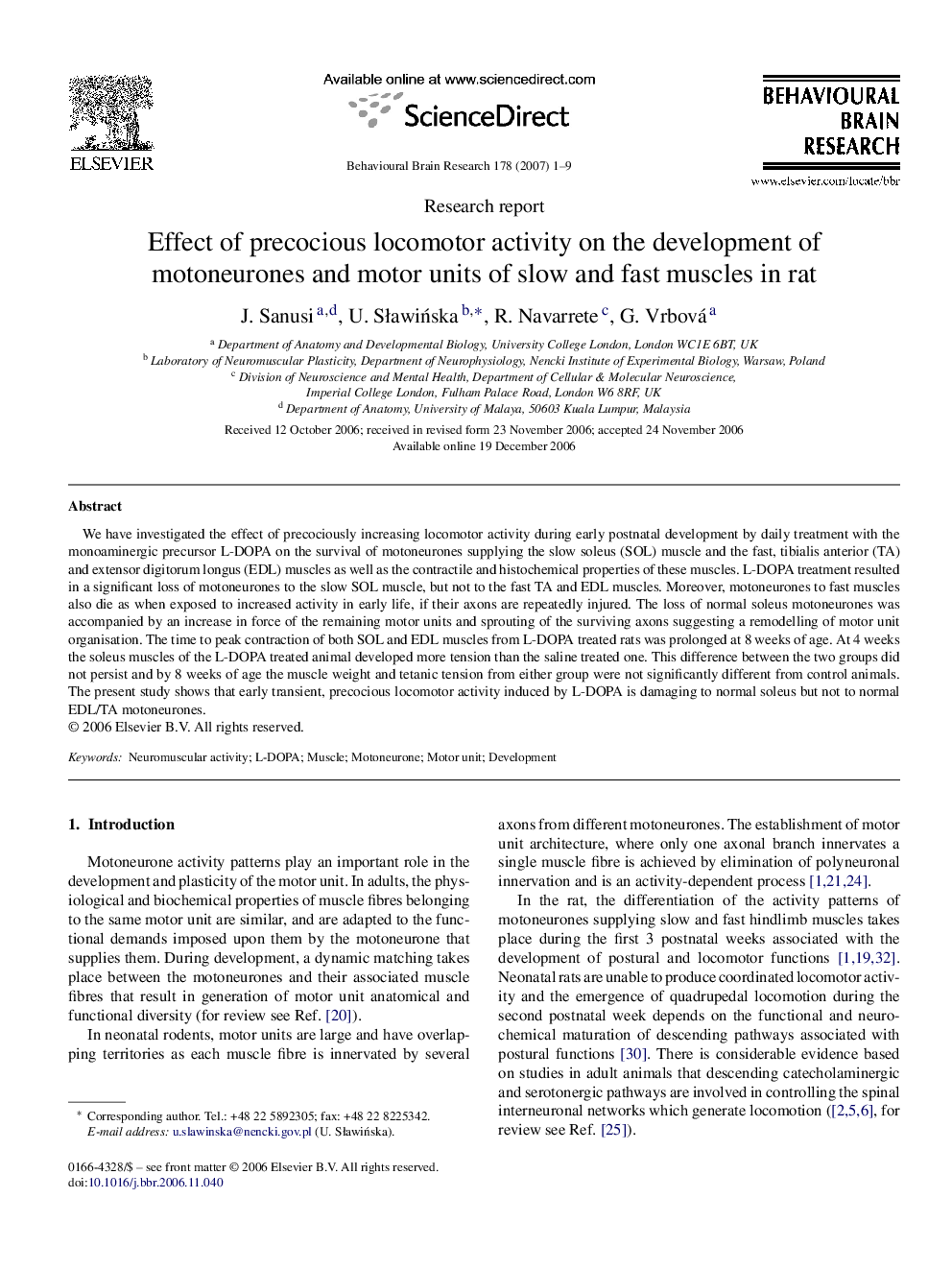| Article ID | Journal | Published Year | Pages | File Type |
|---|---|---|---|---|
| 4315864 | Behavioural Brain Research | 2007 | 9 Pages |
We have investigated the effect of precociously increasing locomotor activity during early postnatal development by daily treatment with the monoaminergic precursor L-DOPA on the survival of motoneurones supplying the slow soleus (SOL) muscle and the fast, tibialis anterior (TA) and extensor digitorum longus (EDL) muscles as well as the contractile and histochemical properties of these muscles. L-DOPA treatment resulted in a significant loss of motoneurones to the slow SOL muscle, but not to the fast TA and EDL muscles. Moreover, motoneurones to fast muscles also die as when exposed to increased activity in early life, if their axons are repeatedly injured. The loss of normal soleus motoneurones was accompanied by an increase in force of the remaining motor units and sprouting of the surviving axons suggesting a remodelling of motor unit organisation. The time to peak contraction of both SOL and EDL muscles from L-DOPA treated rats was prolonged at 8 weeks of age. At 4 weeks the soleus muscles of the L-DOPA treated animal developed more tension than the saline treated one. This difference between the two groups did not persist and by 8 weeks of age the muscle weight and tetanic tension from either group were not significantly different from control animals. The present study shows that early transient, precocious locomotor activity induced by L-DOPA is damaging to normal soleus but not to normal EDL/TA motoneurones.
